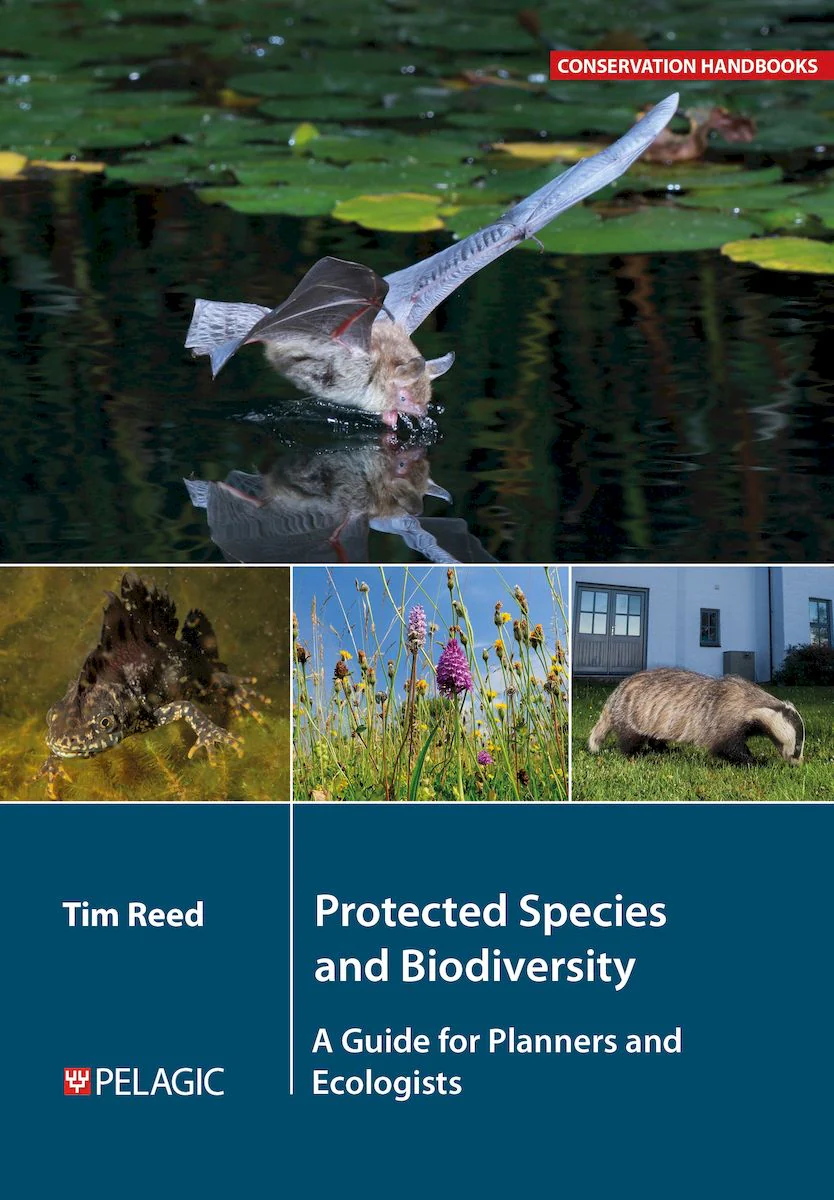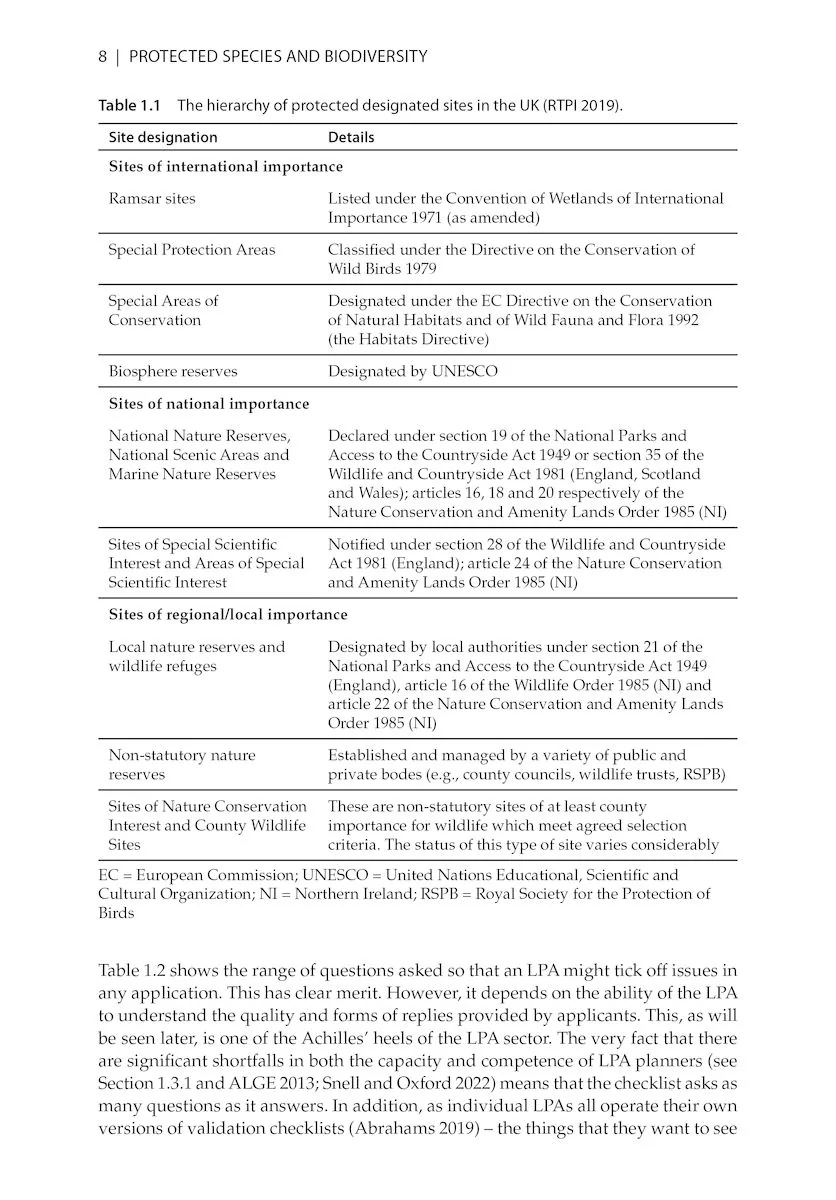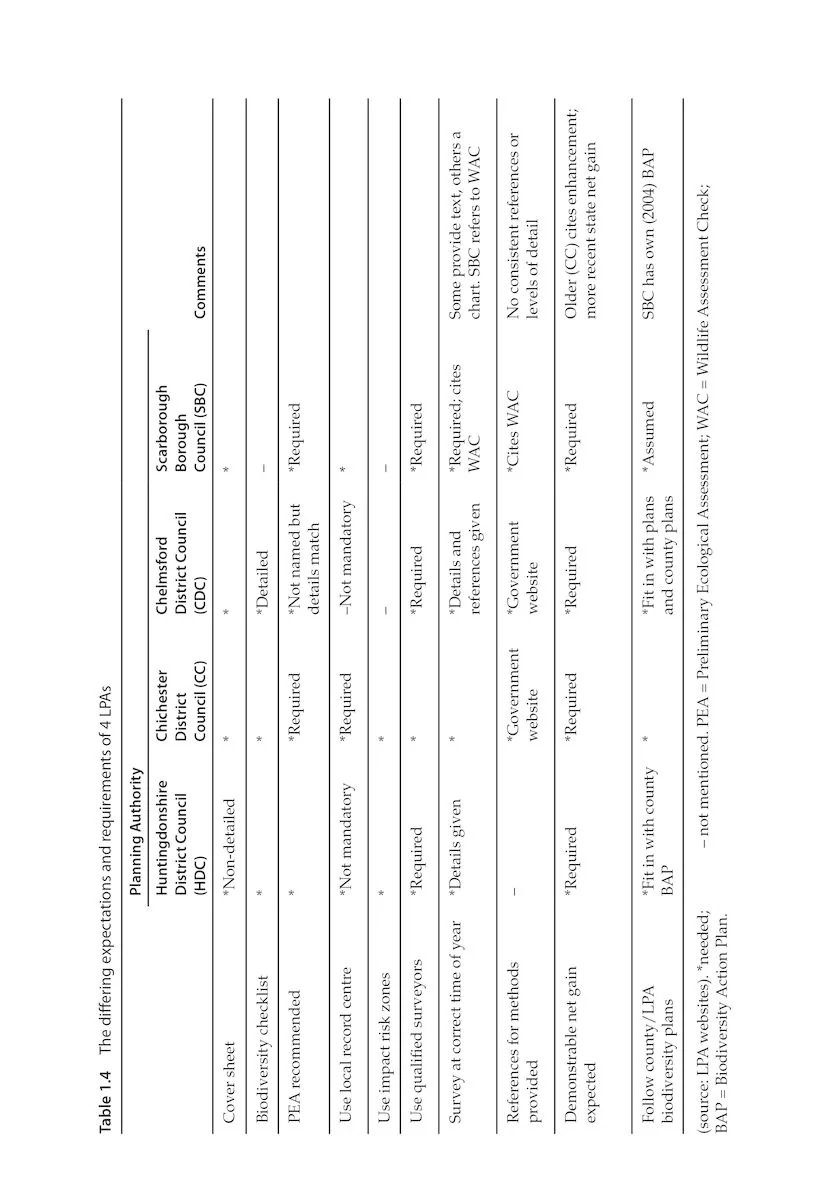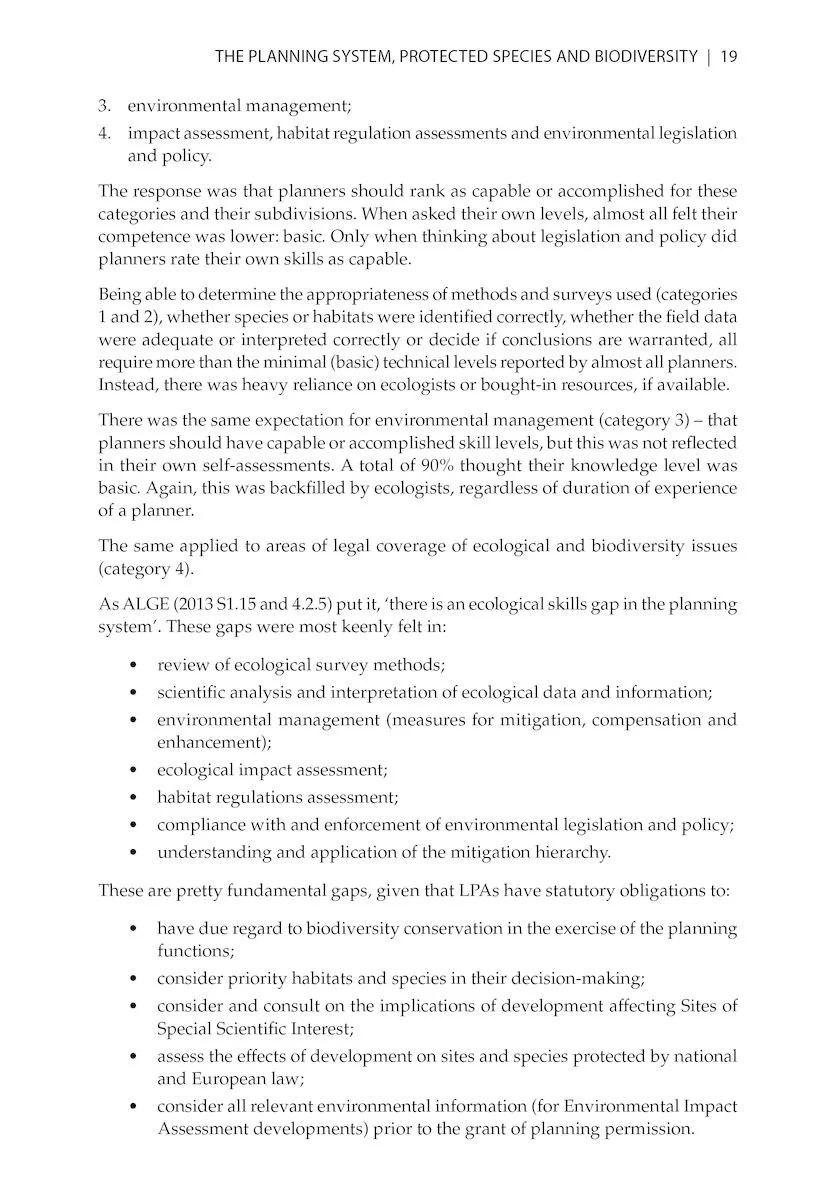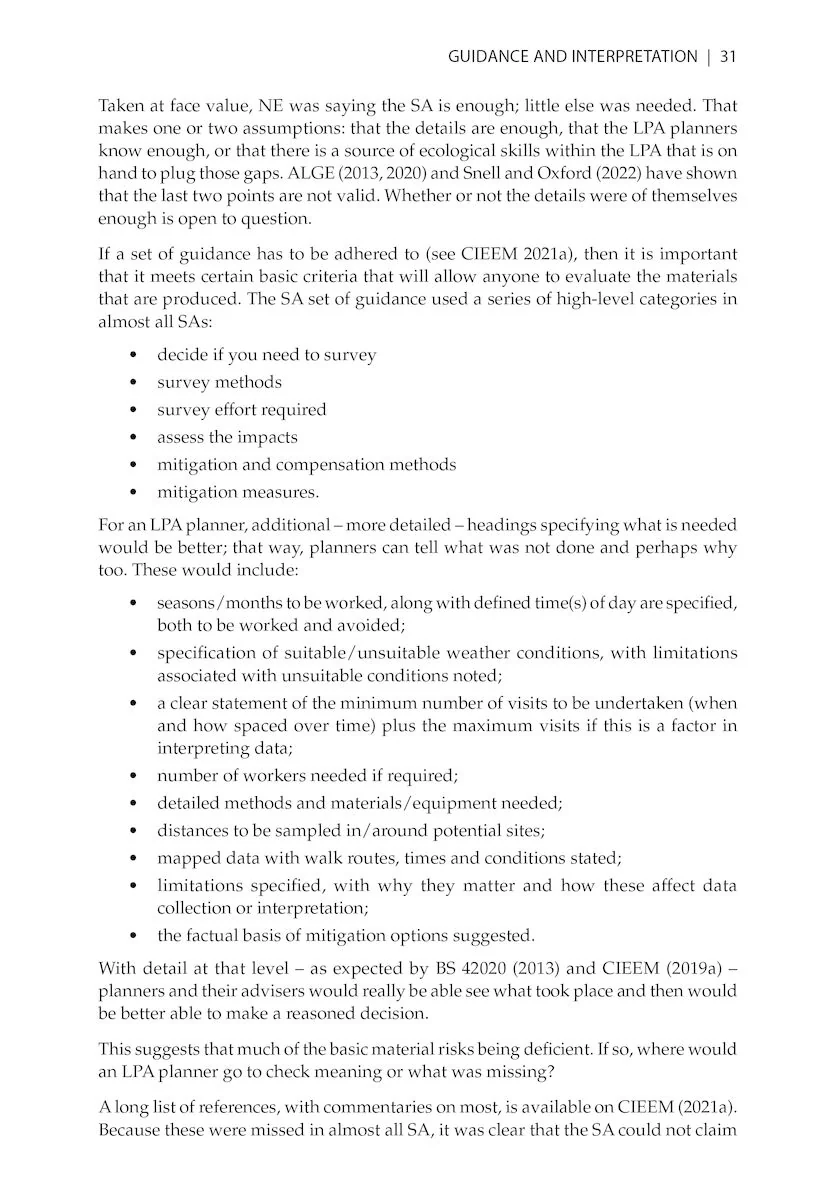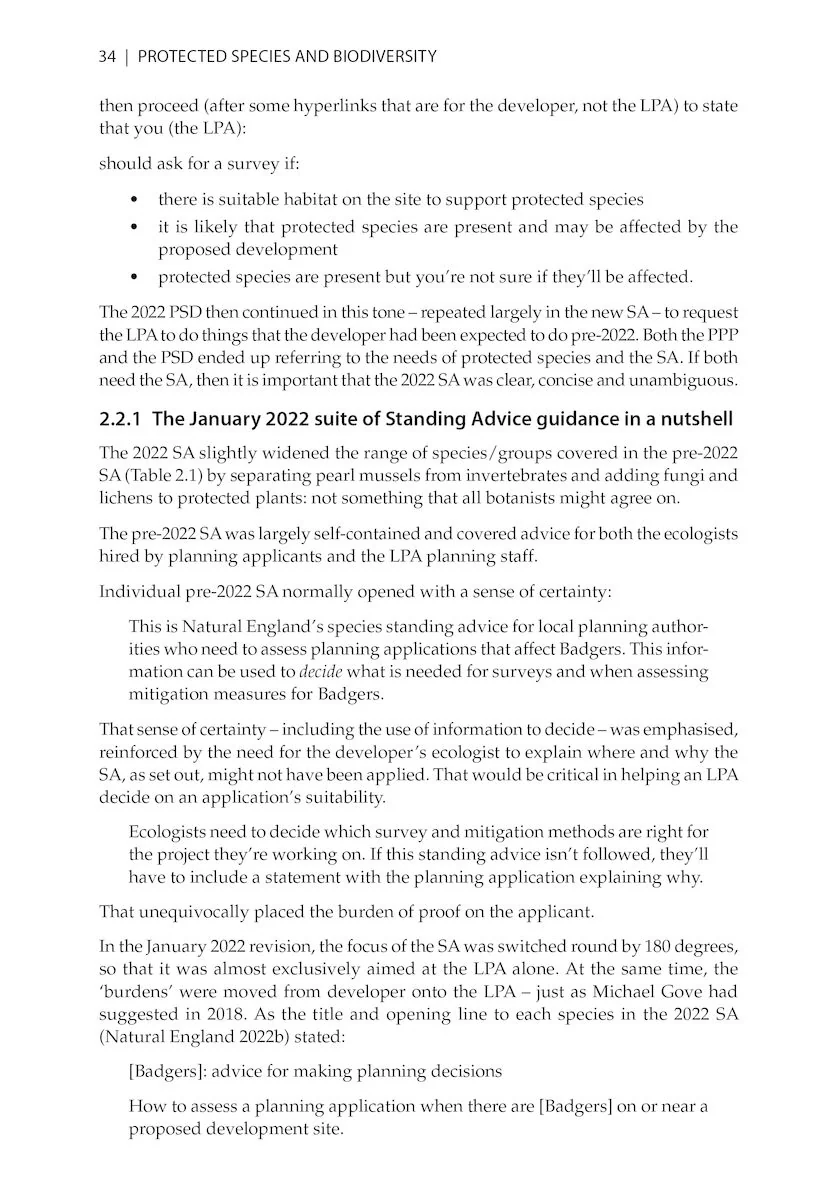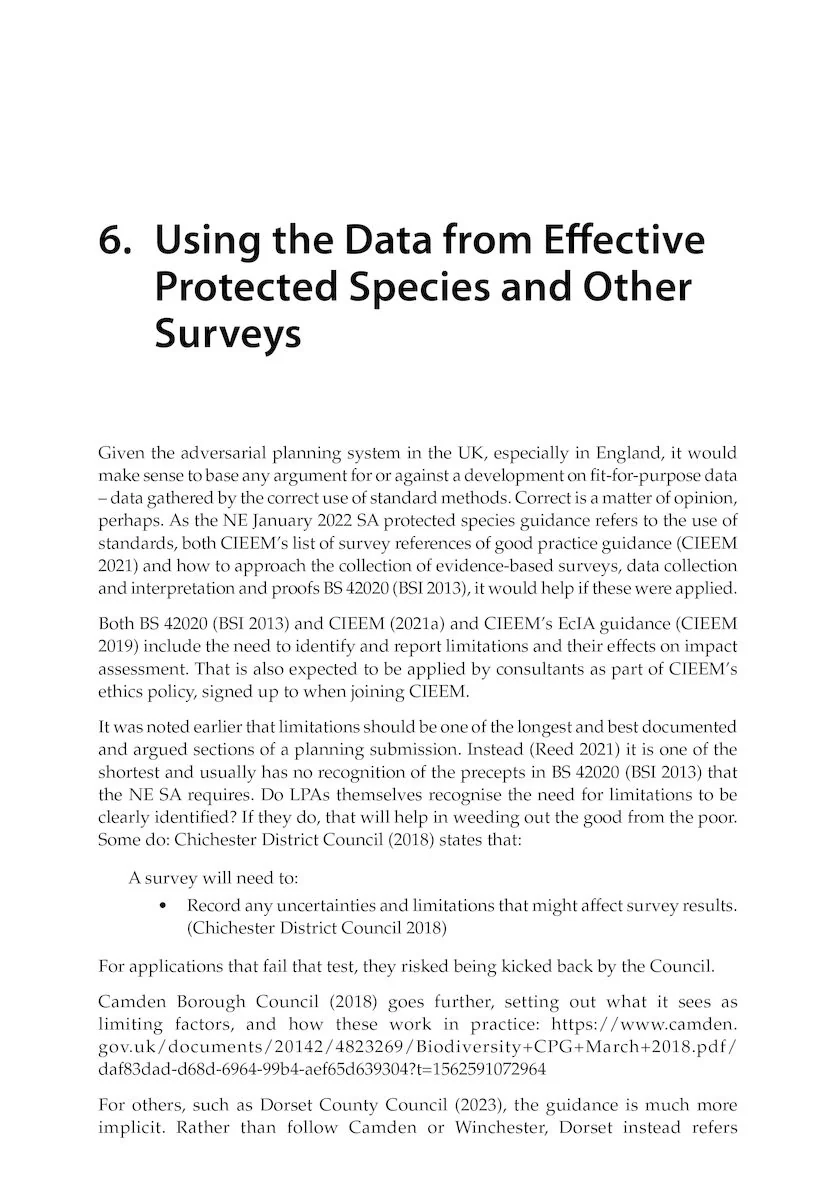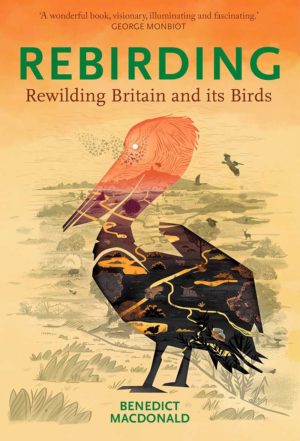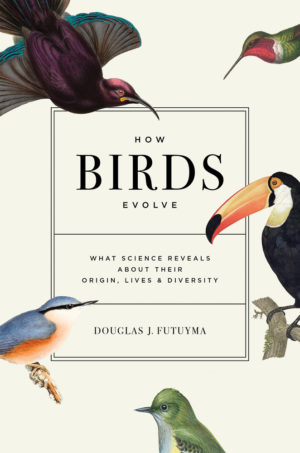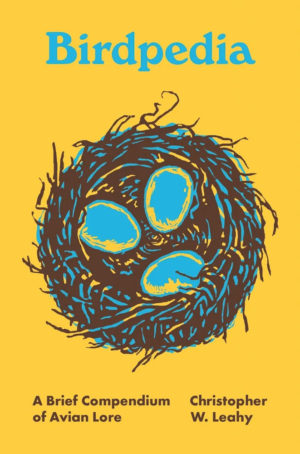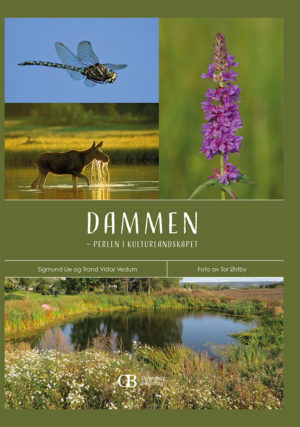This book provides a single source of guidance on the protected-species survey data that accompany planning applications. Comprehensive and clear, it is an essential reference for planners and ecological consultants.
New development proposals potentially affect protected species on a daily basis. For the first time, this guide brings together in one place all the key elements needed to collect and interpret survey data for protected species and therefore help determine planning applications. By working through individual species and group tables, even the least experienced planner can begin critically to evaluate the often-variable material provided by ecologists in planning submissions.
Chapters cover: the planning system and biodiversity; government guidance and its interpretation; how to secure better quality data; the most recent standing advice; detailed notes on protected species; drawing in data from other surveys, and biodiversity net gain. Packed with information, the book also codifies what a planner expects from ecologists, so that both target audiences are able to work better together, and thus more effectively help safeguard protected species.
